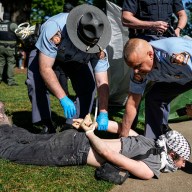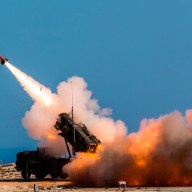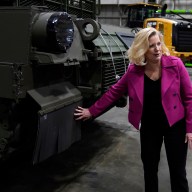KANDAHAR, Afghanistan – Canada’s reconstruction mission in treacherous southern Afghanistan is poised to embark on a new phase in the coming weeks with efforts focused on normalizing small population centres on the five main approaches to Kandahar, the country’s second-largest city.
The aim is to create “model villages” where normal daily and economic activity can flourish in a secure environment and the reach of the central Afghan government is felt, unlike in so many of the existing communities that dot war-ravaged Kandahar province.
“We can’t be everywhere at once,” said Lt.-Col. Carl Turenne, who commands more than 400 soldiers at Camp Nathan Smith, the compound at the edge of Kandahar city that houses Canada’s civilian-led reconstruction team.
If successful, Turenne said, the approach would render the insurgency “irrelevant.”
The idea is simple: identify suitable small villages on the main thoroughfares in and out of the city where coalition support is strong, establish a secure perimeter and then embark on a concerted information campaign to win over the hearts and minds of local villagers.
“This is a recognition that population centres are more pivotal,” said Cory Anderson, who is currently in charge of the 60 civilians working with the reconstruction team.
Indeed, a similar approach is being applied within Kandahar city itself, 10 districts totalling between 500,000 to 800,000 people where the aim is to identify population “pockets” amenable to rejecting the Taliban in favour of a positive alternative, Anderson said.
The Canadian government has been signalling a shift in strategy in recent months ahead of its commitment to end Canada’s combat mission in 2011. Outposts have been dismantled as reinforcement U.S. troops arrive in the region and take over more of the hard-edged military role.
In his visit earlier this week, Defence Minister Peter MacKay said Canadian forces no longer wanted to take and end up “holding swaths of land.”
The new initiative is very much in line with that thinking, Anderson said.
Still, making even small centres safe in the face of a violent and determined insurgency may be easier said than done.
With the ongoing influx of thousands of U.S. soldiers into the country’s restive southern regions, there’s little doubt there will be more “spectacular attacks” in the months ahead, Anderson said.
As has been the case from the beginning, the health and competence of Afghanistan’s national police force – still widely viewed with suspicion and skepticism by locals – remains vital to the success of the shifting mission.
Confidence in the force, one of the high-profile casualties of the Taliban insurgency, remains low among Afghans, who view the officers as corrupt, ill-equipped, poorly trained and ineffective.
Canadian officers from the RCMP and other forces across Canada have been mentoring their counterparts here in an effort to bring their Afghan counterparts up to a higher standard so they might be better equipped to maintain order once coalition forces leave.
The effort is paying off, with an “off-the-chart” improvement in their level of competence, said Anderson, whose stint as acting director of the provincial reconstruction team comes to an end this week.
In some parts of the city, Afghan officers are now doing real police work, he said.
“The policing issue is so important to Canada, if not the most important,” Anderson said. “They are the face of the (Afghan) government.”
The cost to Afghan police, however, continues to be high.
Late Tuesday, a suicide bomber blew himself up in the city’s northern Arghandab district near the local police detachment, killing three officers and injuring nine others, the district chief said.
The area’s chief of police, who was walking with his men when the attack occurred, was among the injured.
– With files from A.R. Khan
















